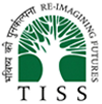Link to the Article published in Frontiers in Environmental Science Journal: https://www.frontiersin.org/article/10.3389/fenvs.2020.566136
Abstract:
Due to the complex nature of ambient aerosols arising from the presence of myriads of
organic compounds, the chemical reactivity of a particular compound with oxidant/s are
studied through chamber experiments under controlled laboratory conditions. Several
confounders (RH, T, light intensity, in chamber retention time) are controlled in chamber
experiments to study their effect on the chemical transformation of a reactant (exposure
variable) and the outcome [kinetic rate constant determination, new product/s formation
e.g., secondary organic aerosol (SOA), product/s yield, etc.]. However, under ambient
atmospheric conditions, it is not possible to control for these confounders which poses
a challenge in assessing the outcome/s accurately. The approach of data interpretation
must include randomization for an accurate prediction of the real-world scenario. One of
the ways to achieve randomization is possible by the instrumental variable analysis (IVA).
In this study, the IVA analysis revealed that the average ratio of fSOC/O3 (ppb−1) was
0.0032 (95% CI: 0.0009, 0.0055) and 0.0033 (95% CI: 0.0001, 0.0065) during daytime
of Diwali and Post-Diwali period. However, during rest of the study period the relationship
between O3 and fSOC was found to be insignificant. Based on IVA in conjunction with
the concentration-weighted trajectory (CWT), cluster analysis, and fire count imageries,
causal effect of O3 on SOA formation has been inferred for the daytime when emissions
from long-range transport of biomass burning influenced the receptor site. To the best
of our knowledge, the IVA has been applied for the first time in this study in the field of
atmospheric and aerosol chemistry.


